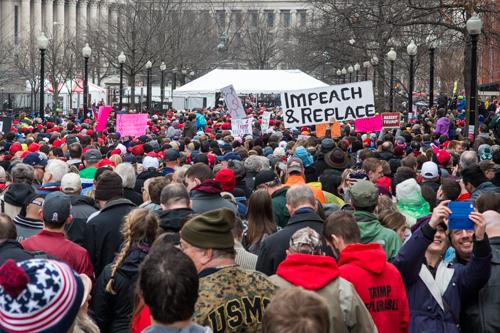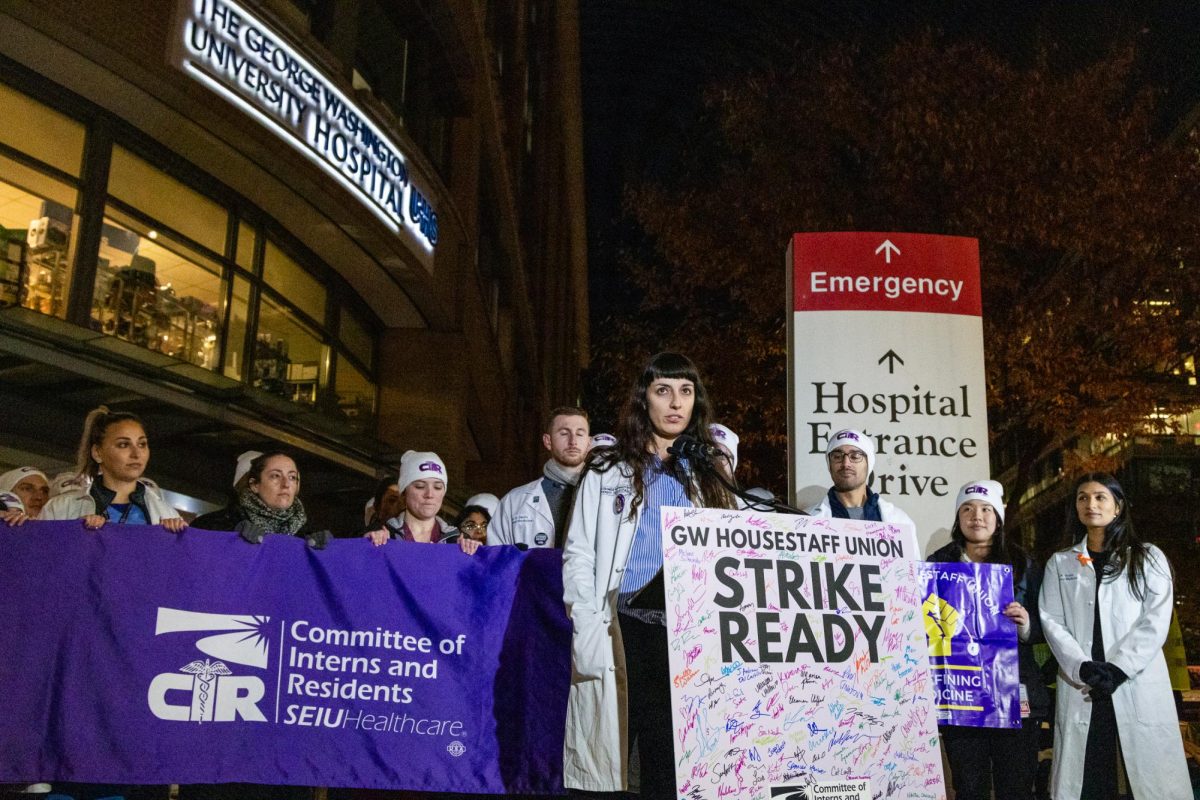
Updated: Jan. 20, 2017 at 4:45 p.m.
This post was written by reporters Colleen Grablick and Helen Elston
Protesters blocked the checkpoint at 10th and E streets as people tried to get onto the National Mall the morning of Inauguration Day.
The protest began around 7 a.m. and was organized about a week ago by The Future is Feminist, an activist group, Courtney Jines, a D.C. resident and organizer of the group, said.
The protest grew as organizations like CODEPINK, a grassroots activism organization, and the Rude Mechanical Orchestra, a roughly 30-person radical music and dance group, flocked to 10th Street. Other groups, including the Freedom Socialist Party, Black Lives Matter and Decolonize this Place, joined the protest later.
The groups formed a blockade to prevent people from entering the security check that led into the inauguration area on the mall. Protesters wore goggles, gas masks, and balaclavas in anticipation of police retaliation.
Several altercations broke out between protesters and police, and pepper spray was used against one protester at around 8:30 a.m.
The police formed another blockade behind the protesters’ barrier in an attempt to help spectators access the checkpoint. The police presence became less prominent when it was apparent that the protesters had succeeded in blocking the checkpoint.
Haley Hughen, a GW freshman, said she found the protest around 8 a.m. and stayed to join in on chants of “my body my choice” and “not my president.”
“He doesn’t represent the majority of Americans, and he doesn’t represent minorities in this country,” Hughen said, referring to President Donald Trump.
MacGuire Benton, a freshman at Cazenovia College from Cooperstown, New York, travelled to D.C. with four Republican friends. As he stood at the protest, his friends attended the ceremony.
“I could not sit idly by,” Benton said. “They’re out supporting Mr. Trump. I respect them, I don’t respect their candidate.”
Elle Fox, a 26-year-old from Detroit, travelled to D.C. with a socialist group called Moratorium NOW!
“We can’t allow this to go on,” Fox said. “It’s such an imperative time to stand up. If we’re quiet it only makes it easier.”
Protestor Alexander Berkman said the protest was in reaction to a change in leadership.
“When the right wing comes into power, then naturally chaos will break out in the streets,” Berkman said. “This protest is just a reaction to an oppressive institution.”
Other protesters were less vocal, preferring a silent protest. Max Esmus, who had travelled from New Jersey that morning to protest, said he prefers to see people standing up for their beliefs by taking positive action rather than criticizing the beliefs of others.
“I’m here to listen, and to converse with other protesters,” he said. “I’m here to watch people take a stand for what they believe in.”
Other protesters highlighted the importance of these demonstrations as a way of creating emotional support.
“This protest is as much about creating an emotional support base, as a reaction against Trump. People need to be together,” argued Andrew Collins, a protester from Philadelphia.
Mary, who attended the ceremony but declined to give her last name, had an argument with protesters near one checkpoint. Mary said she disliked protesters’ automatic response when faced with someone who may not agree with their views.
“People make automatic assumptions when they don’t know me. They don’t understand my situation,” Mary said. She declared herself as a “happy, deplorable, racist bigot” and shouted “Yay Trump!” at the protesters.
“When people come with such a clear intent to disrupt, it’s important that they know I will not be blocked,” Mary said.
John David, a Trump supporter from Detroit, stressed the importance of conversation and discussion when resolving such issues.
“Protests often result in a jungle mentality, creating a them and us mentality,” David said. “It’s important to hear all different perspectives to create a melting pot of ideas, which can then lead to a stronger, and greater America.”






